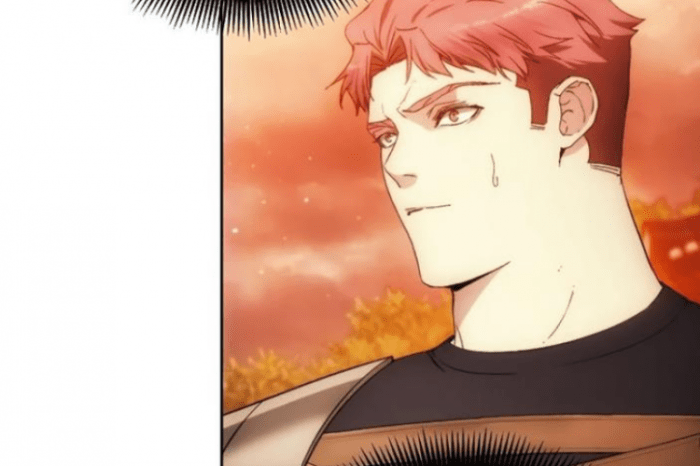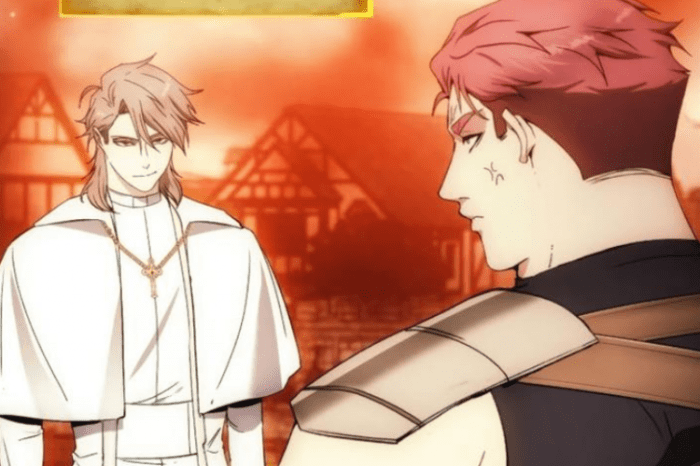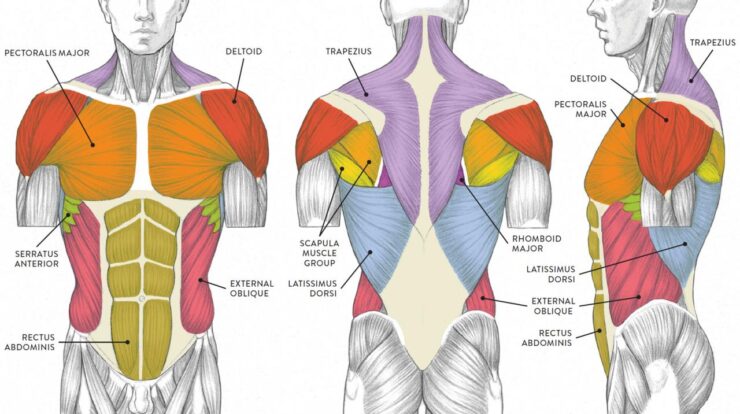
How to live as a villain ch 94 – Prepare to delve into the nefarious world of villains in “How to Live as a Villain Ch. 94.” This chapter unveils the secrets of crafting a compelling villain character, from their motivations to their lairs. Dive into the thrilling realm of evil and discover the strategies and tactics that will make your villain reign supreme.
Villainous Tactics and Strategies

Villains, the nefarious masterminds of literature and film, employ a myriad of tactics and strategies to achieve their sinister goals. These methods, often cunning and ruthless, can be dissected to understand the psychology and motivations behind villainous behavior.
Delve into the intricate world of villainy with how to live as a villain ch 94 , a captivating tale that explores the complexities of the dark side. As you journey through its pages, you’ll discover the sinister machinations and twisted motivations that drive the hearts of villains.
From cunning schemes to shadowy alliances, this chapter delves deeper into the treacherous path of villainy.
Deception and Manipulation
Deception and manipulation are hallmarks of villainous tactics. Villains use lies, half-truths, and emotional manipulation to gain the trust and loyalty of their followers or to outmaneuver their opponents. By creating a false sense of reality, villains can control situations and exploit weaknesses.
Intimidation and Fear
Fear is a powerful tool for villains. They instill terror in their victims through threats, violence, or psychological torment. By creating an atmosphere of dread, villains can suppress resistance and maintain control. Fear can also be used to manipulate behavior and coerce cooperation.
Strategic Alliances
Villains often form alliances with other villains or unsavory characters to further their goals. These alliances can provide access to resources, manpower, or specialized skills. However, forming alliances also carries risks, as it can lead to betrayal or power struggles.
Exploiting Weaknesses
Villains are adept at identifying and exploiting the weaknesses of their opponents. They may target personal flaws, emotional vulnerabilities, or political divisions. By understanding their enemies’ weaknesses, villains can devise strategies to neutralize them and achieve their objectives.
Ethical Implications
The use of villainous tactics raises significant ethical concerns. These methods often involve deception, manipulation, and violence, which can have devastating consequences for victims and society as a whole. It is important to consider the ethical implications of villainous tactics and to use them only when absolutely necessary.
Character Development for Villains

Creating a compelling villain character requires careful consideration of their motivations, backstory, and unique characteristics. Understanding these elements allows you to craft a believable and engaging antagonist that drives the narrative and challenges the protagonist.
Are you ready to embark on a villainous adventure? How to Live as a Villain Ch 94 awaits you! Dive into the captivating world of a villain’s journey, where cunning and determination collide. Discover the secrets of manipulating the system, outwitting your opponents, and achieving your wicked goals.
Whether you’re a seasoned villain or just starting out, this chapter will provide you with the tools you need to succeed in your villainous endeavors.
Villains are often driven by a combination of personal experiences, societal injustices, or a desire for power and control. Their backstories should provide insights into their motivations and explain how they came to embrace their villainous ways.
Types of Villains
Villains come in various types, each with distinct characteristics:
- The Power-Hungry Villain:Driven by an insatiable desire for dominance and control, these villains seek to acquire absolute power over others.
- The Mad Scientist Villain:Driven by scientific curiosity and a desire to push the boundaries of knowledge, these villains often experiment on others or engage in unethical research.
- The Anarchist Villain:Driven by a desire to disrupt society and create chaos, these villains believe the existing order is unjust and seek to destroy it.
- The Tragic Villain:Driven by a tragic past or personal loss, these villains are often sympathetic characters who have turned to evil due to circumstances beyond their control.
Building a Villainous Lair

Designing the perfect villainous lair requires careful consideration of location, security features, and aesthetic appeal. The lair should be secluded and secure, yet accessible enough to allow for easy entry and exit. It should also reflect the villain’s personality and style, creating an intimidating and awe-inspiring atmosphere.
Location
The location of the lair is crucial for its security and functionality. Consider factors such as accessibility, visibility, and proximity to resources. A secluded location, such as a remote island or a hidden cave, can provide excellent protection from unwanted visitors.
However, it may also make it difficult to access the lair or obtain supplies. A more accessible location, such as an abandoned warehouse or a skyscraper penthouse, may be more convenient but could also be more vulnerable to attack.
Security Features
The lair should be equipped with a range of security features to protect against intruders and ensure the safety of the villain and their minions. These features may include:
- High walls and fences
- Motion sensors and surveillance cameras
- Laser grids and force fields
- Traps and secret passages
- Armed guards and loyal minions
Aesthetic Appeal
The aesthetic appeal of the lair is important for creating a memorable and intimidating atmosphere. The lair should reflect the villain’s personality and style, whether it be dark and brooding, sleek and modern, or whimsical and chaotic. The use of lighting, color, and décor can all contribute to the overall aesthetic of the lair.
Acquiring Villainous Resources
In the realm of villainy, resources are the lifeblood of success. From amassing wealth to acquiring cutting-edge technology and loyal followers, villains employ a myriad of strategies to secure the means to achieve their nefarious goals.
One common method of resource acquisition is through theft and plunder. Villains may raid banks, steal precious artifacts, or hijack shipments of valuable goods. While this approach can yield quick results, it also carries significant risks, as law enforcement and rival criminal organizations are likely to be on the lookout for such activities.
Another strategy is extortion and blackmail. Villains may threaten to expose damaging information or harm individuals unless their demands are met. This tactic can be highly effective, especially when targeting wealthy or influential individuals or organizations. However, it requires careful planning and execution to avoid detection and retaliation.
You’ve probably heard that gum disease can be a real pain, but did you know that you can actually cure it without ever seeing a dentist? Check out how to cure gum disease without a dentist for some great tips.
And once your gums are healthy again, you can get back to focusing on the important things in life, like how to live as a villain ch 94.
Legitimate Businesses
Some villains adopt a more subtle approach by establishing legitimate businessesthat serve as fronts for their criminal activities. These businesses may provide a steady stream of income while also offering opportunities for money laundering and other illicit activities. However, maintaining a legitimate business requires significant resources and expertise, and it can be difficult to avoid attracting the attention of law enforcement.
Alliances and Partnerships
Villains can also expand their resources by forming alliances and partnershipswith other criminals. By pooling their resources and skills, they can undertake larger and more complex operations. However, such alliances can be fraught with mistrust and betrayal, and it is essential to carefully assess the risks and benefits before entering into such arrangements.
Technological Advancements
In the modern age, technological advancementshave become increasingly important for villains. From hacking into secure systems to developing advanced weaponry, technology can provide villains with a significant advantage over their adversaries. However, acquiring and maintaining advanced technology can be costly and time-consuming, and it requires specialized knowledge and expertise.
Acquiring villainous resources is a critical aspect of villainy. By carefully assessing the risks and rewards of different strategies, villains can secure the means to achieve their goals and establish themselves as formidable forces in the criminal underworld.
Villainous Relationships and Alliances: How To Live As A Villain Ch 94
Villains do not operate in isolation. They form complex relationships with each other and with non-villainous characters. These relationships can be mutually beneficial or fraught with conflict, and they can have a significant impact on the plot.
Types of Villainous Relationships
- Partnerships:Two or more villains who work together to achieve a common goal. Partnerships can be based on mutual respect, shared interests, or a desire for power.
- Rivalries:Villains who compete with each other for resources, territory, or power. Rivalries can be personal or professional, and they can lead to violence or sabotage.
- Master-Apprentice Relationships:A more experienced villain mentors a younger, less experienced villain. Master-apprentice relationships can be based on genuine affection or a desire for control.
- Romantic Relationships:Villains who fall in love with each other. Romantic relationships between villains can be passionate and intense, but they can also be dangerous and unstable.
- Relationships with Non-Villainous Characters:Villains can also form relationships with non-villainous characters, such as hostages, informants, or even law enforcement officers. These relationships can be complex and unpredictable, and they can have a significant impact on the villain’s character arc.
Benefits and Drawbacks of Forming Alliances, How to live as a villain ch 94
Forming alliances with other villains can have both benefits and drawbacks.
Benefits
- Increased Power:Alliances can increase a villain’s power and influence. By pooling their resources and expertise, villains can achieve goals that would be impossible for them to achieve on their own.
- Shared Resources:Alliances can also provide villains with access to shared resources, such as weapons, technology, and information.
- Emotional Support:Alliances can provide villains with emotional support and companionship. In a world where they are often isolated and feared, villains can find solace in the company of others who understand their way of life.
Drawbacks
- Betrayal:Alliances are always at risk of betrayal. Villains are, by nature, selfish and ambitious, and they may be tempted to turn on their allies if they believe it is in their best interests.
- Conflict:Alliances can also lead to conflict. Villains may have different goals and priorities, and these differences can lead to disagreements and even violence.
- Increased Risk:Alliances can also increase a villain’s risk of being caught or defeated. By working together, villains make themselves a bigger target for law enforcement and other heroes.
Dynamics of Villainous Relationships
The dynamics of villainous relationships are complex and ever-changing. Villains may form alliances for a variety of reasons, and these alliances can be based on anything from mutual respect to a desire for power. However, no matter what the reason, villainous relationships are always fraught with danger and uncertainty.
One of the most important factors in a villainous relationship is trust. Villains must be able to trust each other to keep their word and to fight for the common cause. However, trust is a rare commodity in the world of villains, and it is often tested to the limits.
Another important factor in a villainous relationship is power. Villains are always striving for power, and they may be willing to do anything to achieve it. This can lead to conflict and betrayal, as villains compete for power and influence.
Despite the dangers, villainous relationships can also be a source of strength and support. Villains who are able to trust each other and work together can achieve great things. However, these relationships are always fragile, and they can be shattered at any moment by betrayal or conflict.
Closing Summary
From the depths of villainous lairs to the intricate webs of alliances, this chapter has explored the essential elements of creating a captivating villain. Whether you seek to conquer the world or simply cause chaos, “How to Live as a Villain Ch.
94″ provides the blueprint for unleashing your inner darkness and embracing the path of villainy.
Top FAQs
What is the most effective strategy for a villain to achieve their goals?
Villains must carefully consider their tactics, exploiting fear, deception, and manipulation to achieve their objectives.
How can I create a compelling villain character?
Explore their motivations, backstories, and unique characteristics to craft a villain that resonates with readers.
What are the essential features of a villainous lair?
Location, security, and aesthetic appeal are key factors to consider when designing the perfect lair for your villain.





